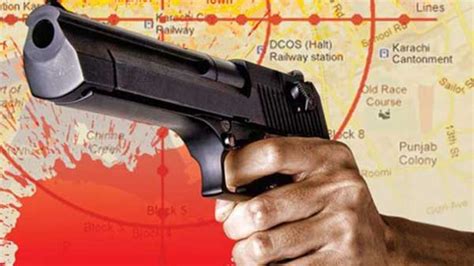In the quiet village of 6/11-L, located in Sahiwal tehsil, an Ahmadiyya community member, Z, faced a terrifying and life-threatening ordeal on a late Saturday night. Standing outside his home, unaware of the lurking danger, Z became the target of a gun attack that could have easily claimed his life.
As the cold night air enveloped the village, two young men, estimated to be between 20 and 25 years old, approached Z on a motorcycle. Without warning, they opened fire on him. The harsh sound of gunshots shattered the peace of the night, echoing through the narrow lanes. Z’s heart raced as the reality of the attack set in. But, in that instant, a flicker of instinct and courage kicked in. Z swiftly ducked behind an iron gate, narrowly escaping death. The attackers, their identities still a mystery, fled the scene before they could cause further harm.
“I was standing near my gate when they came, and before I knew it, the shots rang out,” Z recounted, his voice trembling with the emotions of that close call. “It was dark, and I managed to hide. That’s what saved me. If not for that, I don’t know what would have happened.” He added that he would be able to recognize the attackers if he saw them again, though his heart still beats with the memory of the fear he felt that night.
The villagers who heard the gunshots confirmed the violence of the attack, their voices heavy with concern. This is not just a single incident, but part of a broader pattern of increasing communal tensions in the area, where fear has become a constant companion for those who dare to live their truth. Z’s brother was tragically murdered some years ago in a similar attack, and to this day, the pain of that loss hangs over their family like a shadow.
This region, already scarred by religious strife, has seen its share of heartache. The rise of groups like Tehreek-e-Labbaik Pakistan has only exacerbated these tensions. Z’s own experience serves as a painful reminder of the volatility that many face daily, where personal safety is never guaranteed, and the protection of law seems just out of reach.
Yet, despite the trauma, there is a glimmer of hope. The local police, led by ASP Raosen Taj Raisani, have promised to investigate diligently, pursuing leads with determination. “We are following two to three leads and hope to trace the suspects soon,” he said, offering a faint but important reassurance to Z and the community.
But for Z, the emotional toll of this attack remains heavy. The terror he faced that night is not easily shaken off, nor is the fear for his own life and the lives of those he loves. While the law may move forward in search of justice, the scars of this attack will linger in the hearts of those affected. Z’s story is not just one of survival; it is a testament to the strength it takes to endure, even when the world around you feels so uncertain.
As the investigation unfolds, the village continues to stand in a fragile silence, waiting for answers that may never come. But Z’s resilience in the face of this attack is a reminder of the courage that exists even in the darkest moments. The hope that, someday, the community will live in peace, free from the constant fear of violence, remains a powerful force driving their unwavering resolve.
In another part of the district, the authorities were busy with a different crisis. Over the past few days, thousands of metric tons of wheat were recovered from hoarders attempting to exploit the current shortages. The raids, led by Pakpattan Deputy Commissioner Asif Raza, were part of a larger effort to curb illegal stockpiling. However, despite these efforts, the pain of rising flour prices continues to squeeze ordinary families.
In the midst of all this turmoil, the lives of everyday people like Z continue to be overshadowed by threats of violence and economic hardship. The wheat crisis and the rising cost of necessities only add to the challenges they face. But for now, the hope for justice and a better future remains a flickering light in a time of deep uncertainty.
